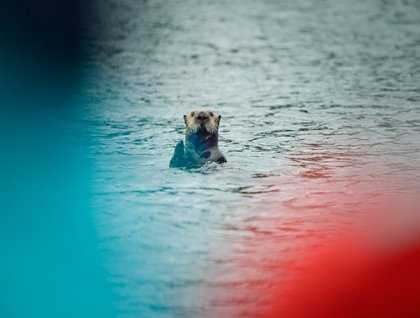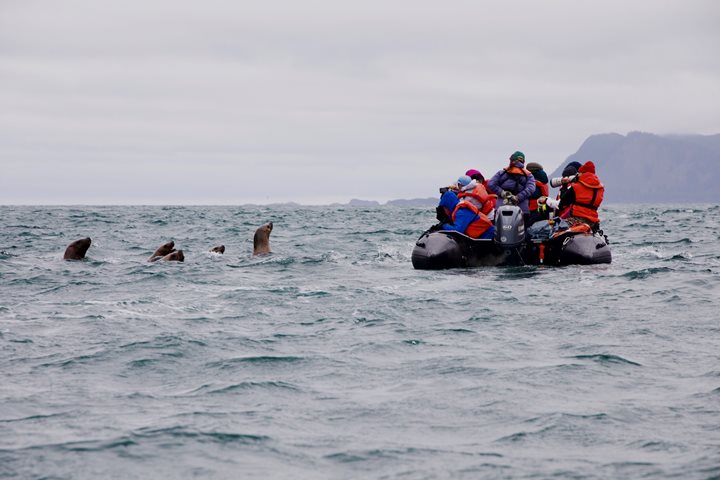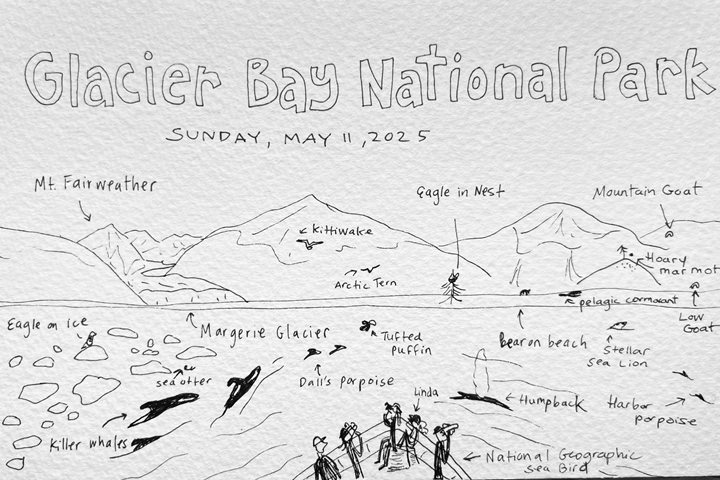We spent the day by boat in search of marine mammals. Having traversed Peril Strait overnight, we headed north through Chatham Strait and into Icy Strait.
Our day began early as a humpback was sighted along the shore of Chichagof Island. Though a nice sighting, this whale was just swimming along, so we moved on. And just after breakfast we came across a cow-calf pair. The calf was fairly frolicsome and fun to watch. It rolled around and waved its pectoral flippers. Not long later we found killer whales. While humpbacks are common and pretty easily seen, killer whales are unpredictable and so are always a lucky sighting. We watched a tight group of whales including several females, some smaller whales and a big impressive male. These whales were likely “residents,” or king salmon eaters. By looking at their dorsal fins and saddle-patches, we can learn a lot about the killer whales, and we have found that there are two kinds of killer whales regularly seen in the Inside Passage—fish eaters and mammal eaters. Though they swim the same waters, their cultures are so different that they have not interbred for many thousands of years!
In the afternoon we went looking for marine life in a more intimate manner. Our expedition landing craft are the logistical heart of our operations, and allow us great flexibility. The Inian Islands lie in the middle of Icy Strait and Cross Sound. These joined bodies of water empty and fill all of northern Southeast Alaska with every turn of tide, so the currents are fierce here. Though potentially dangerous, they also stir the ocean into one of the richest places on the Northwest Coast. We found the culmination of this richness in all sorts of sea creatures. Common murres, extraordinary divers, were in flocks everywhere. Kittiwakes flew by daintily. Some of us saw puffins and rhinoceros auklets. Alongside swam harbor porpoises and seals. Sea otters groomed busily and dined on an impressive variety of sushi. Sea lions tumbled over each other in the waves, or sprawled over the rocks in piles.
We shall find that marine and terrestrial life are even more tightly connected here than one might guess, and today’s exploration was a fitting introduction to the natural and cultural history of the whole region.









